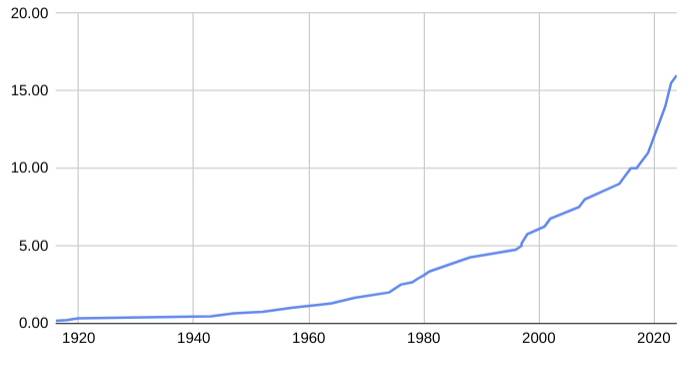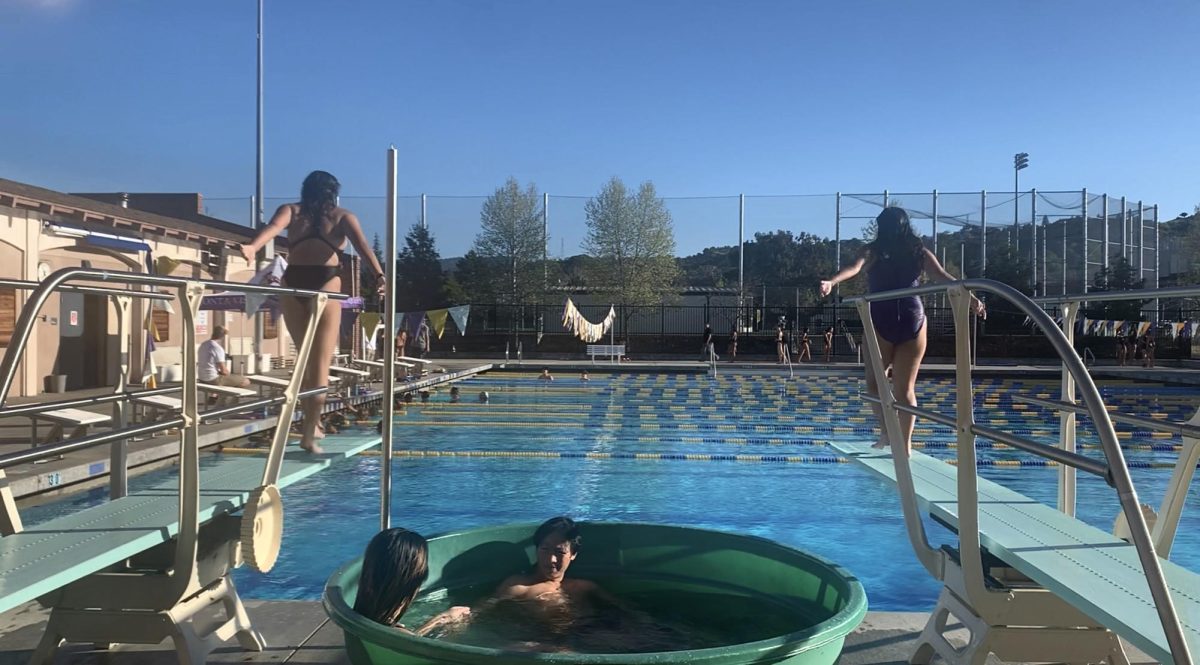Originally printed with the headline Faces of Faith on the Oct. 23.
She could not tell if the red pooling around the wreckage was blood or paint. Again and again, junior Aniqua Azad watched footage of the construction crane that had been toppled by whipping gusts of wind, crashing into the roof and entrance of the Grand Mosque, killing 107 people. As the cameras tremored, it was as if the entire world was shaking.
It happened on Sept. 11, 2015. Azad returned home from school that day not knowing if her father was one of those people.
When Azad’s father announced earlier in the year that he planned to complete his Hajj, the Islamic pilgrimage completed once in a lifetime by adults, they immediately began to ready themselves together.
While Azad’s father would travel alone to the Ka’aba, the center of the Grand Mosque in Mecca, Saudi Arabia, Azad would learn new prayers to aid her father’s spiritual journey. Meanwhile, her mother scrambled to CVS and Target for tents, sleeping bags and first aid kits with medication. With over two million people participating, it would be terrible for Azad’s father to catch somebody else’s cold.
But they hadn’t imagined the worst of it.
When Azad’s mother picked her up from school on Sept. 11, her mother carefully asked her if she’d heard about anything that had happened that day. Confused, Azad said she hadn’t heard anything.
But while she’d spent the day in class, her mother had been receiving calls from family and friends, everyone asking the same question: “Is he ok?”
Azad’s mother called her husband again and again. And when he finally picked up, she was speechless with relief. He was okay. He had meant to travel to the Ka’aba that day, but he’d fallen asleep instead. When Azad heard what had happened from her mother, she felt like her heart had stopped.
“That was [one moment] in my life when religion helped me,” Azad said. “I was patient, and I prayed.” She prayed for her father to return home safely, and he did. She believed that God had saved him.
For Azad, this is what faith is about: trust, patience and gratitude. Every day, Azad tries to give thanks to God for giving her life and for protecting the ones she loves. It’s about family above all.
And while Azad prayed for her father’s safety, junior Salma Sheriff was at home reading about the crane accident, wide-eyed as she scrolled through the comments.
“Some people thought it was karma for 9/11. Some people thought more people should have died,” Sheriff said. She paused. “But those were innocent people.”
Sheriff knew that there would always be people who saw Muslims only as the few faces flashed on nighttime television. As the one word captioning them.
Seventh grade was the first and only time she was called a terrorist.
Sheriff was standing in the shot-put line at a track and field meet when a boy strolled up to her. That’s what she’ll always remember about him: his height, the way he towered over her and said,
“Terrorist.”
Stunned, all she could do was wait her turn, throw the shotput and go home.
What she was overwhelmed with wasn’t fear. It was realization.
“I was enlightened,” Sheriff said, recalling the incident. “I realized that some people wouldn’t like me because I’m Muslim. There’s always this slight worry that something I say will be taken differently.”
After being called a terrorist, she couldn’t help but wonder: what if that was what everyone thought of her? What if it had always been in the back of everyone’s minds?
This was what her mother told her the first day she wore the hijab: that some people would not see her as an individual. That she would be judged for every word she spoke. But she quickly decided that this couldn’t be true. She wouldn’t let it be true. Now, when people say they wonder why so many Muslims are terrorists, she is quick to say that most aren’t. The problem, she believes, is that media companies aren’t interested in reporting about the average Muslim.
But to Sheriff, the greatest tragedy isn’t when media images and stereotypes invite hatred into her community. It’s when that fear is internalized.
“Even more sad than the people who hate Islam are [Muslims] who hate themselves for being Muslim” Sheriff said. “It’s easy to get distracted by other people’s hatred and not see what’s really beautiful.”
Like Sheriff, Zayan Musa, who attends Middle College, has always found Islam to be a bringer of hope. Yet her mother also warned her, the day she wore the hijab for the first time, that people might look at her twice. At airports, security officers often eyed her several times before herding her to another room to examine her hijab.
Even Azad, who does not wear the hijab, has become accustomed to these warnings, but they have not always protected her. Once, when she was writing in Arabic for a creative project in class, she walked up to her teacher and asked for his approval.
The teacher bent over to read the writing, asking her casually if the words meant “Death to America.”
Shocked, she turned and walked back to her seat. She held her head high, not wanting to let what he’d said make her ashamed. Maybe it had only been a joke. But still, it stung. That word he had glanced at meant so much to her. That word meant God.
She was just as astonished by the casualness with which students joked about and encouraged stereotypes.
One day in another class, while the teacher was very much present, students were cracking jokes when one boy called out, “[Muslims] sold bombs shaped like prayer rugs. Prophets went through the roof.”
Half the class burst into laughter. But what surprised her most was that the teacher had heard it and said nothing. And while some students did protest, the reaction was weak, and Azad, surrounded by chuckling classmates, could say nothing herself. She’d wanted to scold the student who’d used the word “prophet” as a joke: prophets in Islam are the messengers of God, and to her, they certainly aren’t jokes.
She’s always believed religion to be a positive force in her life: she remembers her childhood stories, how her mother recounted all the stories of the prophets. She remembers the peace that praying had granted her when she thought her father might not make it home.
“The only thing negative about my religion is other people’s reaction,” Azad said. She believes that Islamophobia is far from fading away.
According to a study conducted by Gallup in 2011, 48 percent of Muslim Americans have experienced racial or religious discrimination, and in the same study, 60 percent of Americans believed that Muslims are not respected in Western society.
But demographics are changing: according to data from the Pew Research Center, the Christian population has decreased nearly 10 percent between 2007 and 2014, while the Muslim population, in particular, has expanded the most, with a 50 percent increase in that same amount of time. Though Christians are still the vast majority, Azad believes that Islam and other religions are sometimes seen as a threats to the traditional majority as more immigrants enter the United States.
“Racism and Islamophobia are tied together,” Azad said. When a woman refused to sell a boomerang to her father, she knew that it was more than just his religion. It was the color of his skin.
In a traditionally Christian-dominated country, Azad, a child of Bangladeshi immigrants, knows that she will probably always be a minority — but an eventual shift from a Christian majority could mean greater awareness of other religions. It could mean a more informed generation. To her, this means that when she tells people she’s Muslim, everyone will just shrug and say, “That’s cool.”
Still, most people don’t know she’s Muslim. After all, she doesn’t wear the hijab, something that seems to be a bigger deal for other people than for her.
“‘People ask me, why don’t you wear the headscarf?’” Azad said. “And [I say I’ll wear it] when I have enough faith in myself that I won’t take it off.”
She admits that when people imagine someone who is Muslim, they often picture a stereotype of a woman in a full burqa or at least the hijab, without realizing that it’s a personal choice. That she isn’t doing anything wrong by not wearing it because there is no such thing as “wrong.”
And if people tell her that wearing the hijab is anti-feminist or oppressive to women, she’s quick to highlight the irony.
“People think that women who wear the hijab have been oppressed by their husbands and fathers,” Azad said. “But really, people who tell women to stop wearing the hijab are oppressing those women.”
Though she admits that in countries such as Saudi Arabia, the hijab can be forced on women, she doesn’t understand why it would be acceptable for Muslim women in the United States to be pressured to do the opposite.
To Azad, these kinds of hypocrisies aren’t isolated. They’re cogs in the greater machine of framing Muslims as threats. She agrees that Christians are not commonly judged by violent content in the Bible, and yet Muslims are constantly told that that the Qu’ran preaches bombing and terrorism.
“The Qu’ran also preaches about how to divorce, how to do [so many] things,” Azad said, smiling. “You shouldn’t judge anything by its cover.”
Like Sheriff, she believes that Islam, like any religion, has no specific doctrine, no right or wrong way to practice. More important than following a religion is learning to question it, to research the reason behind a belief or a custom, to evaluate everything on a personal level. This is what she knows to be the path to truth.
Azad is always in pursuit of that truth. As the secretary of the Muslim Student Association, she helps set up room A205 at lunch so that Muslim students can pray. This winter, the five slots of prayer time will shift, meaning that they’ll need a space to pray at school. The prayer rugs they’ve brought in advance are rolled and tucked in a storage cabinet, dusty but ready to be unfurled. Every year, they prepare the same way: desks frame the room. The president delivers a sermon. The students kneel, facing the Ka’aba. Here, they are protected: from outside eyes, from light, from sound. They stand in their rows. They dim the lights. Except for the occasional muffled voice seeping in from the hallway outside, the room is charged with silence.



















